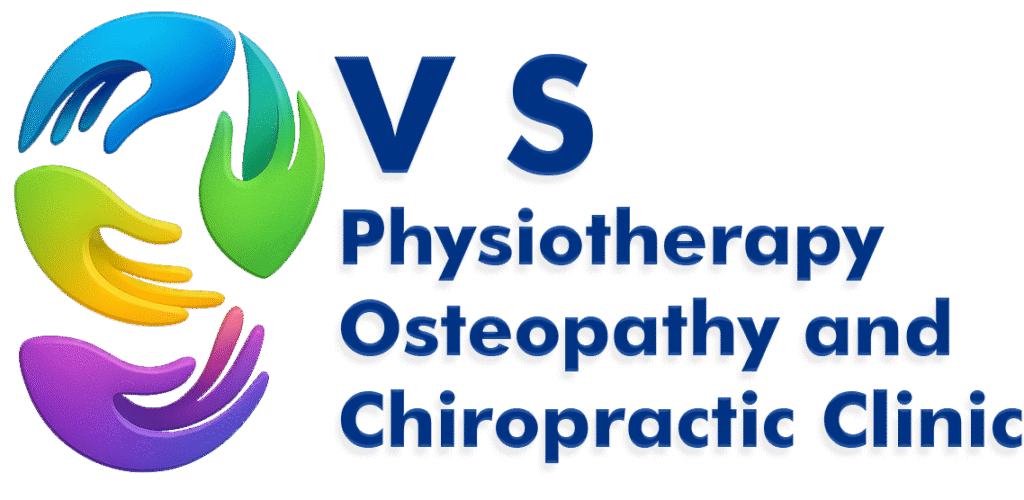Winter brings cozy sweaters and hot tea. It also brings tighter muscles, more neck and shoulder tension, and more back stiffness for many people. If you are noticing that stress and cold make your muscles ache more, physiotherapy can help. This article explains why winter increases muscle tension and gives clear physiotherapy techniques you can start today.

Why winter increases stress-related muscle tension
Here are the main, easy-to-understand reasons people feel more tense in winter.
- Cold reduces blood flow to limbs, which increases stiffness
Cold causes small blood vessels to constrict to protect core body temperature. Less blood flow makes muscles and soft tissues feel tighter and less flexible. This can increase the sensation of muscle tension and pain. - Muscles tighten to conserve heat
When the body senses chill, muscles contract slightly to create warmth. Over time this low-level contraction increases fatigue and soreness in areas such as the neck, shoulders and lower back. - Less movement and more sitting
Shorter daylight hours and colder weather often lead to less activity. Prolonged sitting stiffens hip flexors and the lower back. Reduced movement weakens muscles that normally support posture, increasing strain when you do move. - Weather can change joint and tissue mechanics for some people
Some studies find that lower temperatures and changes in barometric pressure are linked to increased joint and periarticular symptoms, though evidence is not uniform across all conditions. We balance this later when recommending when to seek help.
What physiotherapy does for stress-related muscle tension
Physiotherapy treats the root causes of tension rather than just masking symptoms. Key benefits:
- Improves local circulation and tissue flexibility with heat and movement.
- Releases tight muscles and trigger points using manual therapy and guided self-release.
- Restores proper posture and movement patterns through corrective exercises.
- Reduces stress-related breathing patterns and teaches relaxation techniques.
- Creates a safe progressive plan to return you to comfortable daily activity.
Practical physiotherapy techniques and exercises (step-by-step)
Do these after a 5-minute warm up: march on the spot, gentle shoulder rolls, or a warm shower. Start gently. If any exercise causes sharp pain, stop and call the clinic.
1. Heat then gentle mobility (early routine)
- Warm the area with a hot pack or hot towel for 8–10 minutes.
- Do slow neck rolls: look down, roll the head gently right, up, left and down. Do 6 slow circles each direction.
Why: Heat increases blood flow, reducing stiffness before movement.
2. Pec stretch at doorway (open chest, reduce forward shoulder posture)
- Stand in a doorway. Place forearm on the doorframe at shoulder height. Step forward until a gentle stretch is felt across the chest. Hold 20–30 seconds. Repeat 2 times each side.
Why: Opens the chest, counters hunched posture from long desk hours.
3. Thoracic extension on chair (upper back mobility)
- Sit on a chair with hands behind your head. Gently arch your upper back over the chair back while keeping pelvis stable. Hold 3–5 seconds. Repeat 8–10 times.
Why: Improves mid-back mobility, reduces neck compensation.
4. Scapular squeezes (shoulder blade strength)
- Sit or stand tall. Squeeze shoulder blades together gently and hold 4 seconds. Repeat 10–12 times. Do 2 sets.
Why: Strengthens postural muscles that reduce neck and shoulder strain.
5. Soft tissue self-release with a ball (trigger point work)
- Use a small massage ball or tennis ball against a wall. Place it on a tight spot in the upper back or shoulder. Apply gentle pressure and breathe for 30–60 seconds until tension eases. Move to next spot.
Why: Releases localized tight knots safely at home.
6. Diaphragmatic breathing and progressive relaxation (reduce stress tension)
- Sit tall. Place one hand on chest and one on belly. Breathe in through nose so belly rises, breathe out slowly through lips. After 6 breaths, tense shoulders up to ears for 3 seconds then release with an exhale. Repeat 5 times.
Why: Corrects shallow breathing that maintains neck tension and activates relaxation pathways.
7. Hip flexor stretch and glute bridge (for lower back tension)
- Hip stretch: kneel with one foot forward in a lunge. Tuck pelvis slightly and push hips forward until you feel a stretch. Hold 20–30 seconds; repeat twice per side.
- Glute bridge: lie on back, knees bent. Lift hips by squeezing glutes, hold 2 seconds, lower slowly. Do 10–12 reps.
Why: Relieves anterior hip tightness that pulls on the lower back and increases muscle tension.
Daily habits to reduce winter muscle tension and stress
- Move every 30–45 minutes when working at a desk. Stand, stretch or walk 1–2 minutes.
- Maintain warmth around shoulders and neck at home and work. Use a light shawl or shoulder wrap if needed.
- Practice diaphragmatic breathing for 5–10 minutes daily to lower baseline tension.
- Keep a consistent sleep routine; poor sleep raises pain sensitivity and tension.
- Stay hydrated and maintain protein intake to support muscle repair.
When to see a physiotherapist or doctor
Book an assessment at VS Physiotherapy if you have:
- Persistent sharp pain that does not improve after a week of home care.
- Numbness or tingling in arms or legs.
- Weakness that limits walking or lifting.
- Pain that wakes you from sleep or is associated with fever or unexplained weight loss.
Early assessment helps tailor a safe program and prevents small problems from becoming bigger.
How VS Physiotherapy Osteopathy Center and Chiropractic Clinic can help
At our Kalyanpur clinic we offer:
- One-on-one assessment and personalized exercise plans.
- Manual therapy, myofascial release and trigger point treatment.
- Posture correction and workplace ergonomics advice.
- Guided breathing retraining and relaxation techniques.
- Home exercise handouts and follow-up support.
Clinic details
VS Physiotherapy Osteopathy Center and Chiropractic Clinic
C-18 Kalyanpur (West) Front Of SRM (TATA) Motors Mazar waali Gali, Tedhi Pulia Ring Rd, Lucknow, Uttar Pradesh 226022
Phone: 070079 32170
Call or WhatsApp us to book a consultation. A short assessment helps us give a safe, effective plan so you can move with less tension this winter.
Quick FAQ
Q. Will heat alone fix my muscle tension?
A. Heat helps temporarily. Best results come from combining heat, movement, targeted exercises and posture correction.
Q. How long to see improvement?
A. Some people feel reduced tension in a few days. Meaningful change often takes 2–3 weeks with consistent practice and physiotherapy.
Q. Is massage safe in winter?
A. Yes when done by a trained therapist. Massage plus mobility and strengthening gives longer lasting relief.
Closing
Winter makes many people feel tighter and more stressed. A simple, consistent physiotherapy routine plus small daily habit changes often reduces muscle tension and improves comfort. If your tension is persistent or severe, reach out to VS Physiotherapy at 070079 32170 for a personalized plan.
